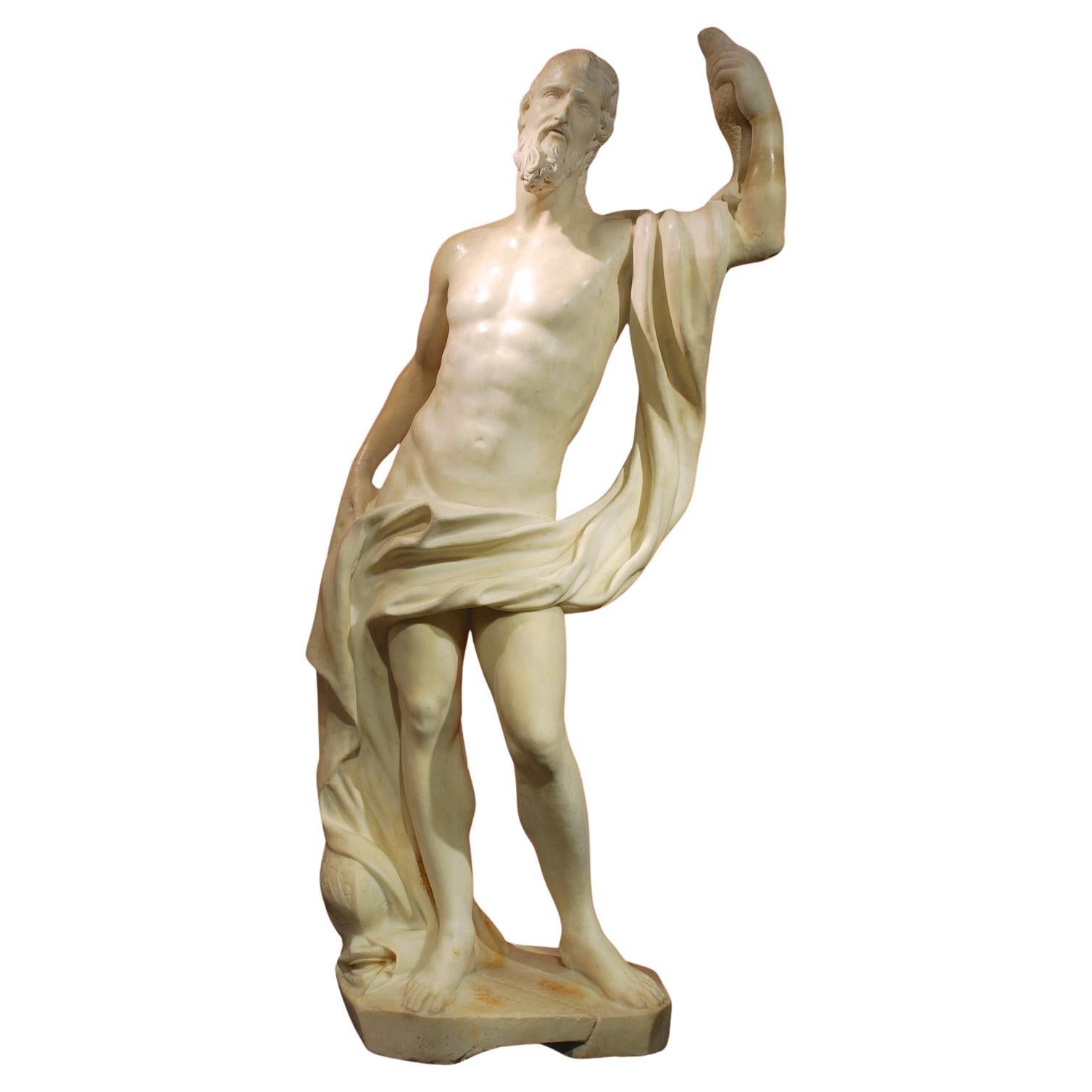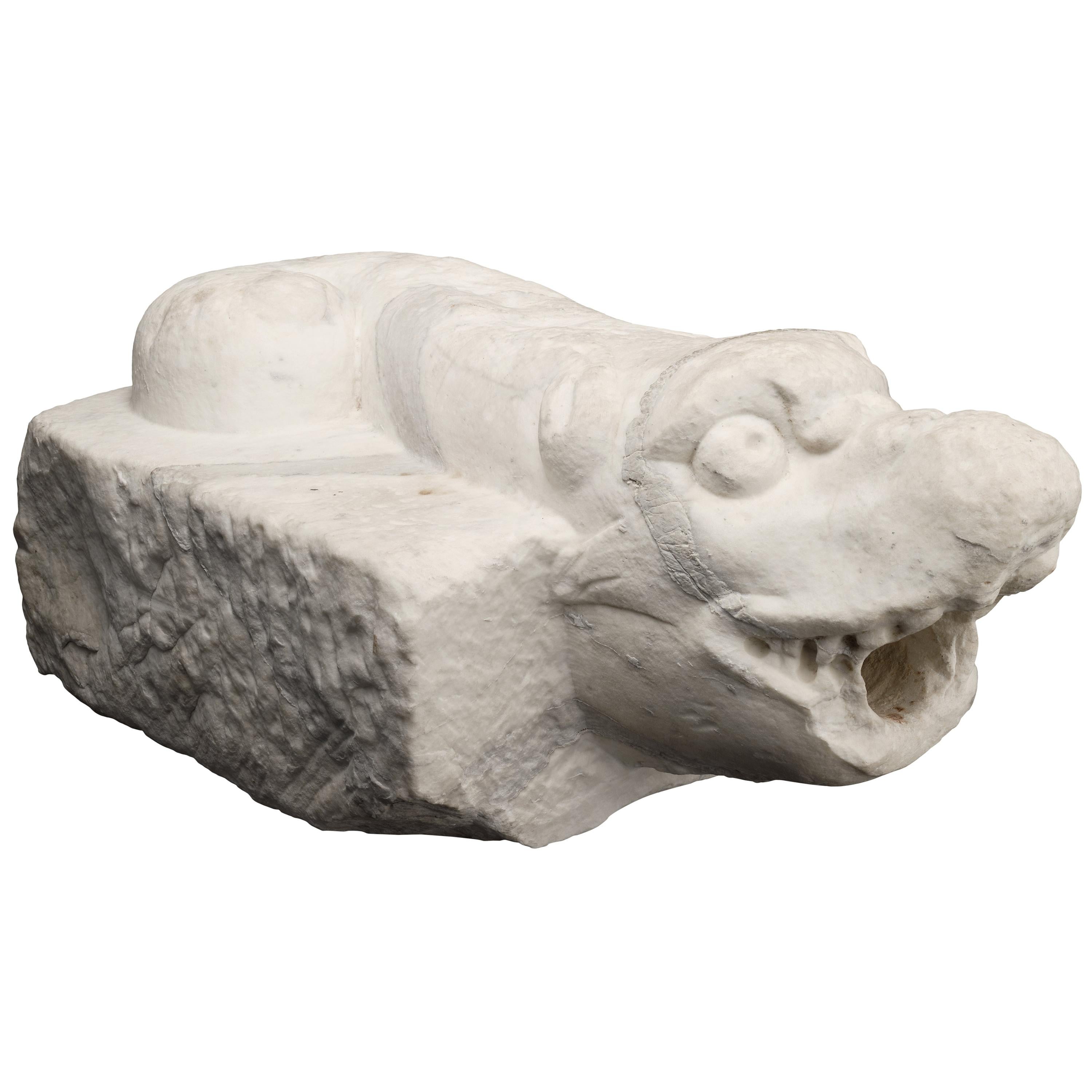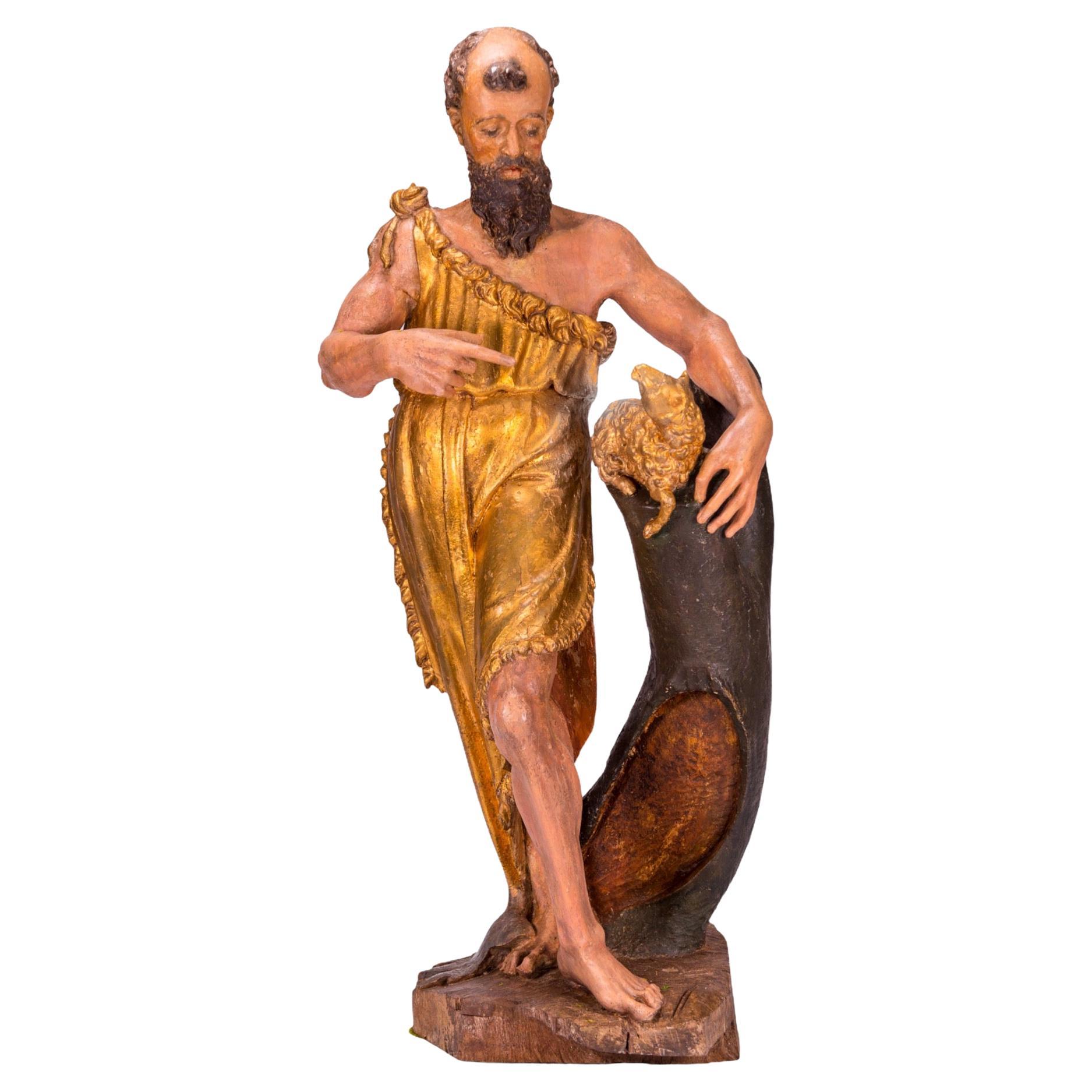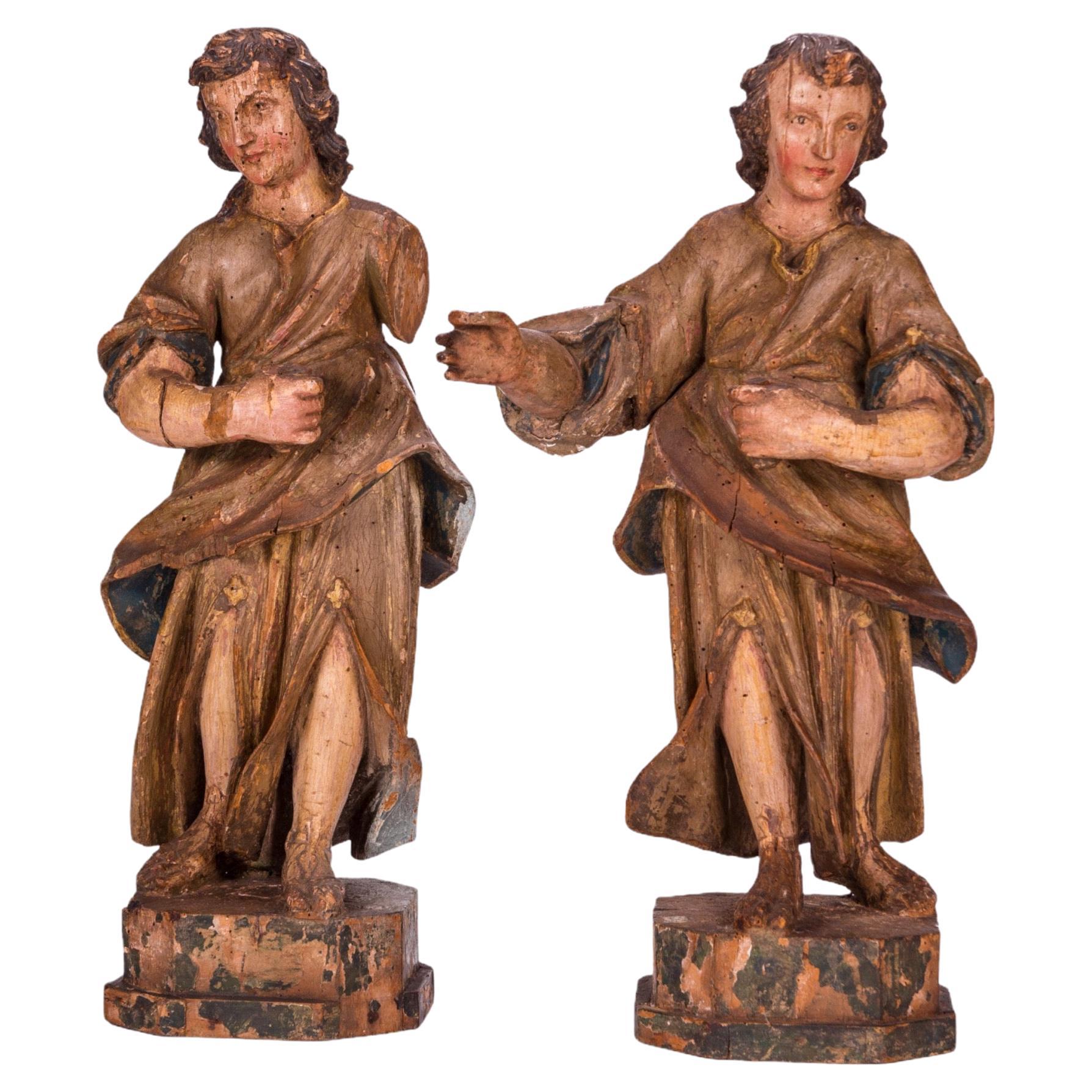Items Similar to 16th CENTURY MARBLE SCULPTURE OF A YOUNG HERCULES
Want more images or videos?
Request additional images or videos from the seller
1 of 12
16th CENTURY MARBLE SCULPTURE OF A YOUNG HERCULES
About the Item
Splendid sculpture in white Carrara marble depicting a young Hercules holding the world. Originally, the work was conceived to be used as a caryatid at the beginning of a sumptuous marble staircase in a palace. Subsequently, the work was sold and, in 1900, it became part of the collection of the garden of a villa located in the Roman hills, later destroyed by the bombings of the Second World War. The work shows signs of erosion due to prolonged exposure to atmospheric agents. Despite this, the beauty and majesty of the work are still evident. The statue is full of antiquity and history, and the mastery in modeling the marble and the precision in the details give the work an aura of grandeur and power. The work is attributed to the School of Valerio Cioli, a renowned Florentine sculptor who lived between 1529 and 1599.
Measurements: H x W x D 85 x 35 x 33 cm
- Dimensions:Height: 33.47 in (85 cm)Width: 13.78 in (35 cm)Depth: 13 in (33 cm)
- Style:Renaissance (Of the Period)
- Materials and Techniques:
- Place of Origin:
- Period:
- Date of Manufacture:1550
- Condition:Wear consistent with age and use. We remind you that the authorization of the Fine Arts is required for export.
- Seller Location:Firenze, IT
- Reference Number:1stDibs: LU7189239383732
About the Seller
5.0
Vetted Seller
These experienced sellers undergo a comprehensive evaluation by our team of in-house experts.
1stDibs seller since 2022
12 sales on 1stDibs
Typical response time: 13 hours
- ShippingRetrieving quote...Ships From: Firenze, Italy
- Return PolicyA return for this item may be initiated within 1 day of delivery.
More From This SellerView All
- 16th CENTURY GUARD'S STOOLLocated in Firenze, FITypical stool with backrest and curved legs in solid walnut wood with dark patina. This type of bench is used in guard posts, for this reason the seat is small and uncomfortable, to ...Category
Antique 16th Century Italian Renaissance Stools
MaterialsWood, Walnut
- 16th Century Renaissance Florentine ChestLocated in Firenze, FIBeautiful model of chest in carved walnut with features typical of the late sixteenth century in Florence with the addition of parts decorated with grotesque lean tempera on a chalky background. Used as a small travel chest, it is complete with an antique lock...Category
Antique 16th Century Italian Renaissance Cabinets
MaterialsWood, Walnut
- SECOND HALF OF THE 16th CENTURY CHESTNUT CHESTLocated in Firenze, FIThe chest in question is an elegant piece of furniture made entirely of chestnut wood. Its manufacture dates back to the Renaissance, around the second half of the 16th century, by T...Category
Antique 16th Century Italian Renaissance Cabinets
MaterialsWood, Chestnut
- 16th CENTURY RENAISSANCE STOOLS IN MINKLocated in Firenze, FIElegant and refined stools in hand-carved walnut wood, with turned legs and padding in fine wild mink. The parallelepiped shape of the seat is simple and ergonomically designed to of...Category
Antique 16th Century Italian Renaissance Stools
MaterialsAnimal Skin, Wood
- END OF 16th-EARLY 17th CENTURY SIDEBOARD WITH CARYATIDSLocated in Firenze, FISplendid sideboard in solid walnut, finely carved with refined decorative details. The cabinet has two doors that open onto two large shelves, and two drawers on the front. The class...Category
Antique 16th Century Italian Renaissance Credenzas
MaterialsNutwood
- 16th CENTURY RENAISSANCE SMALL SIDEBOARD IN SOLID WALNUTLocated in Firenze, FIElegant sideboard in solid walnut wood with dark patina, small but refined in size. The cabinet is equipped with two doors and two drawers, with turned and lost wax cast bronze handl...Category
Antique 16th Century Italian Renaissance Credenzas
MaterialsNutwood
You May Also Like
- A 16th century carved marble sculpture of poseidonLocated in London, GBThis fine and imposing sculpture is an excellent example of 16th century Italian craftsmanship. The figure is stood on a raised, shaped rectangular base with a carved "dolphin" at th...Category
Antique 16th Century Italian Renaissance Figurative Sculptures
MaterialsMarble
- Italian Ancient Marble Sculpture Fountain, Late 16th CenturyLocated in Milano, ITSea monster Carrara marble mouth fountain Italy, late 16th century It measures 13.8 x 31.5 x 18.9 in (35 x 80 x 48 cm) State of conservation: some small evident gaps and widespread signs of wear due to outdoor exposure. The gray marks crossing it do not come from restoration, but are rather the natural veins of the marble. This work has some morphological characteristics typically associated with the iconography of the sea monster: an elongated muzzle, sharp teeth, protruding eyes, elongated ears, and a coiled serpent's tail. An in-depth series of studies on artistic depictions of the sea monster attempted to verify how this symbol evolved in antiquity in the European and Mediterranean contexts and how it gradually changed its image and function over time. The iconography itself is mutable and imaginative and its history is rich with cultural and artistic exchange, as well as the overlapping of ideas. This occurred so much that it is difficult to accurately pinpoint the "types" that satisfactorily represent its various developments. However, we can try to summarize the main figures, starting from the biblical Leviathan and the marine creature that swallowed Jonah (in the Christian version, this figure was to become a whale or a "big fish", the “ketos mega”, translation of the Hebrew “dag gadol”). Other specimens ranged from the dragons mentioned in the Iliad (which were winged and had legs) to "ketos” (also from Greek mythology), the terrifying being from whose Latinized name (“cetus”) derives the word "cetacean". See J. Boardman, “Very Like a Whale” - Classical Sea Monsters, in Monsters and Demons in the Ancient and Medieval Worlds, in Papers presented in Honor of Edith Porada, Mainz am Rhein 1987, pp. 73-84). In Italy the monster underwent yet further variations: it can be found in Etruscan art on the front of some sarcophagi representing the companion of souls, while among the Romans we find the “Pistrice” (cited by Plinio in Naturalis Historia PLIN., Nat., II 9, 8 and by Virgilio in Eneide: VERG., Aen., III, 427), which appeared in the shape of a stylized hippocampus or a very large monstrous cetacean and evolved into a hideous being with a dragon's head and long webbed fins. During the Middle Ages, the sea monster was the object of new transformations: at this time, it is often winged, the head is stretched like a crocodile, the front legs are often very sharp fins - sometimes real paws - until the image merges with dragons, the typical figures of medieval visionary spirituality widely found throughout Europe (on this topic and much more, see: Baltrušaitis, J., Il Medioevo fantastico. Antichità ed esotismi nell’arte gotica, Gli Adelphi 1997). In Italy during the 15th and 16th centuries, the revival of classicism - representative of the humanistic and Renaissance periods - led to a different reading of these "creatures". Indeed, the sea monster was also to find widespread use as an isolated decorative motif, especially in numerous fountains and sculptures where dolphins or sea monsters were used as a characterizing element linked to water (on this theme see: Chet Van Duzer, Sea Monsters on Medieval and Renaissance Maps, London, The British library, 2013). From the morphological point of view, the "sea monsters" of this period are mostly depicted as hybrid figures, in which the body of a mythological or real being (a hippocampus, a sea snake, a dolphin), is joined to a head with a rather indistinct appearance. It was usually characterized by large upright ears, an elongated snout, sharp teeth and globular, protruding eyes; a complex and indefinite figure, both from the symbolic point of view and from that of its genesis. The work we are examining is placed as a cross between the medieval sea serpent and the Renaissance dolphin, with stylistic features which recall the snake as often used in heraldry (such as the "snake" depicted in the coat of arms of the Visconti - the lords and then dukes of Milan between 1277 and 1447 - and which, for some, may be derived from the representations of the “Pistrice” that swallowed Jonah). In the search for sources, Renaissance cartography and in particular woodcuts should not be neglected. See for example the monsters of Olaus Magnus, from the editions of the “Historia de gentibus septentrionalibus” (“History of the peoples of the north”) and the natural histories of Conrad Gesner, Ulisse...Category
Antique 16th Century Italian Renaissance Animal Sculptures
MaterialsCarrara Marble
- Sculpture of John The Baptist, 16th CenturyLocated in North Miami, FLEarly 16th Century Spanish gold gilded and polychromed carved wood sculpture of John The Baptist.Category
Antique 16th Century Spanish Renaissance Figurative Sculptures
MaterialsGold Leaf
- 16th Century Walnut Sculptures from GermanyLocated in Brussels, BrusselsVery elegant sculpture reprenting a Putti (angel) from the German renaissance period -16 century Rare sculpture in walnut of great quality with a very beau...Category
Antique 16th Century German Renaissance Figurative Sculptures
MaterialsWalnut
- Angelic Carved Wood Sculptures, 16th CenturyLocated in North Miami, FLPair of 16th Century Italian carved polychromed angelic sculptures.Category
Antique 16th Century Italian Renaissance Figurative Sculptures
MaterialsGold Leaf
- 19th Century Bath Stone Sculpture of a Young HerculesLocated in Essex, MAEnglish, 19th century. Composite bath stone garden sculpture of a standing young Hercules with lion head cape. Unmarked. Approx. h. 55", w. 16", d. 14".Category
Antique 19th Century English Neoclassical Figurative Sculptures
MaterialsCast Stone





